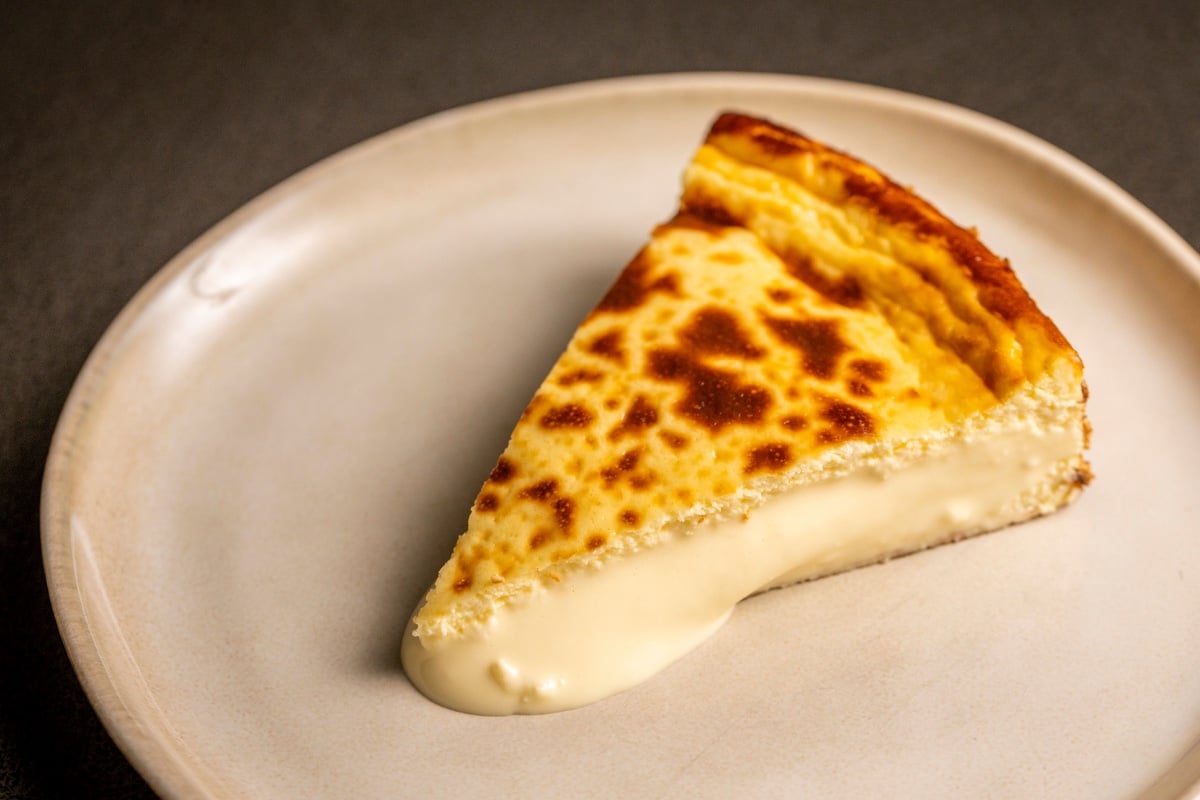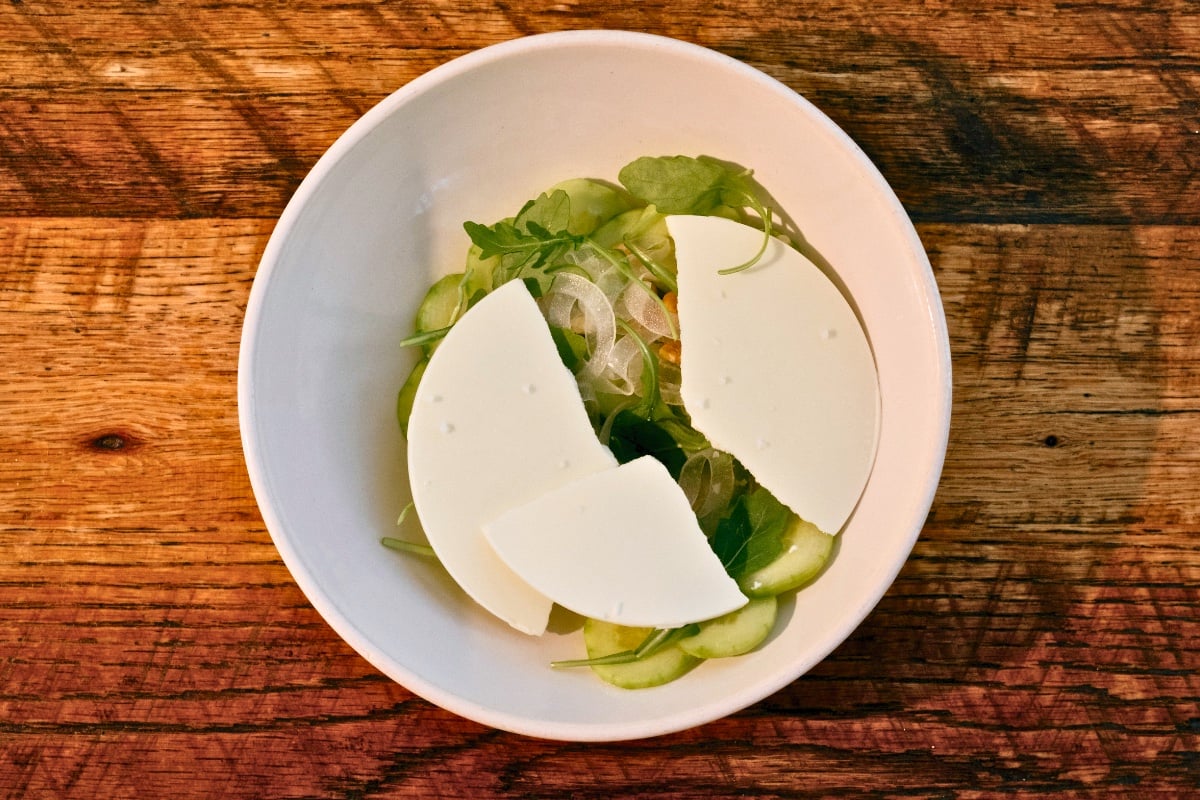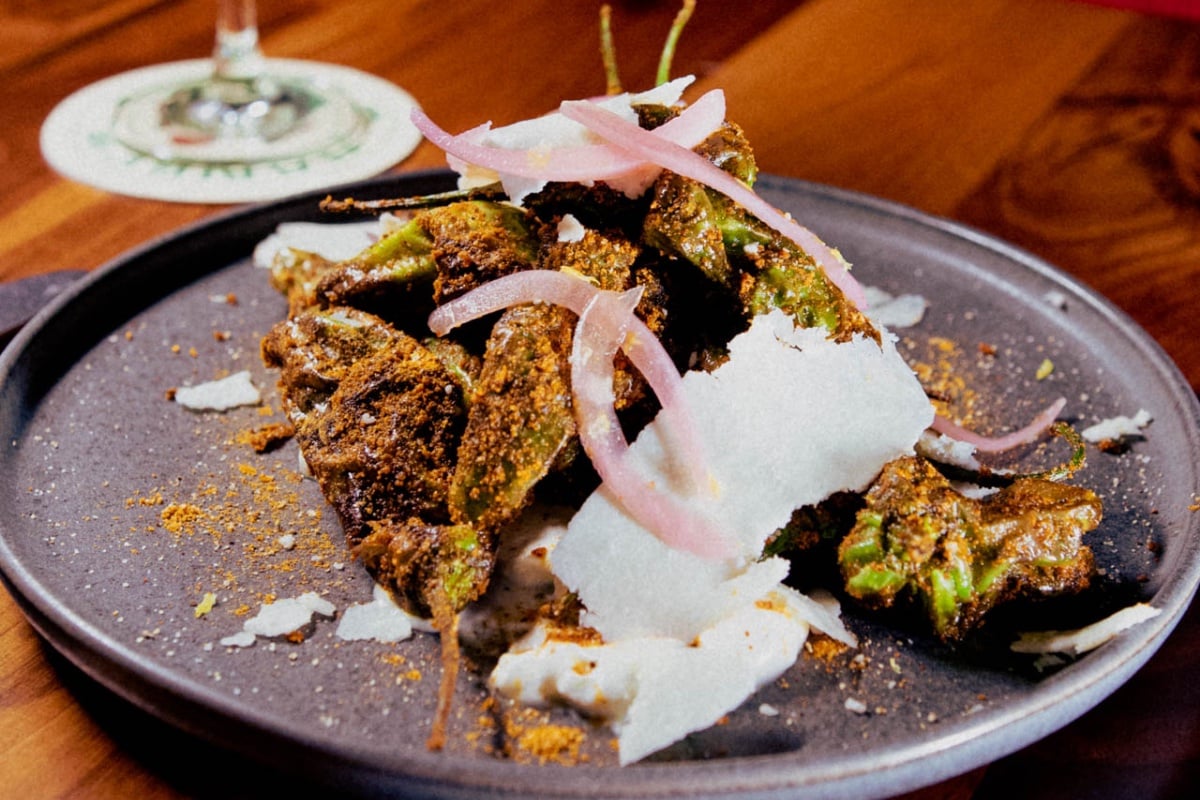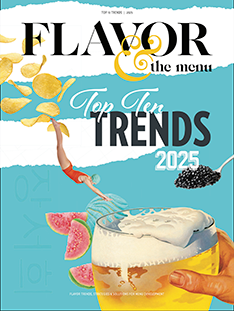
3 Inventive Cheese Applications
Transforming dishes by leveraging impactful ingredients
3 Inventive Cheese Applications
Transforming dishes by leveraging impactful ingredients
By Mike Kostyo, Katie Ayoub, and Nicole Duncan
September 24, 2024
By Mike Kostyo, Katie Ayoub, and Nicole Duncan
September 24, 2024
For most chefs, the first order of business when developing a new recipe is to create something delicious that delights guests. But a close second behind delicious delight is one-of-a-kind creativity. After all, the culinary arts draws innovators who relish the challenge of building something better, bolder and boundary-pushing.
In the age of social media, creating visually audacious dishes has become a common practice, but aesthetic virality can lack substance and is ultimately fleeting. On the other hand, a dish that targets multiple senses—exceptional taste, intriguing texture, alluring aroma and compelling visuals—not only captures attention, but keeps it.
Achieving this level of success requires harmony among the various ingredients and at least one assertive player to make the whole dish pop. In the case of the three Best of Flavor entries below, inventive cheese applications serve as a linchpin in making their corresponding dishes edgy in all the right ways.
 Photo Credit: Edan Bistro
Photo Credit: Edan Bistro Instead of a mousse-like interior, the Tarta de Queso at Edan Bistro boasts a rich, almost-liquid cheese interior that tones down the sweetness and ups the craveability.
Basque-style cheesecake has been inching onto more menus in recent years, but the dessert is still somewhat under the radar. Given the growing popularity, menuing even the most basic Basque cheesecake would be compelling, but Aitor Garate Berasaluze, chef/owner of Edan Bistro in North Miami, Fla., decided to take the trending dessert a step further. The chef hails from Spain’s Basque region and as such, is well intimated with the traditional method of preparing this regional specialty, lending him creative license to do something more daring.
Berasaluze’s Tarta de Queso doubles down on indulgence, opting for a thick, luscious interior rather than the traditional dish’s light-as-air texture. Similar to a Brie in texture, the cheese all but flows from under the crispy exterior, which is baked to a traditional toasted finish, bringing contrasts in both flavor and texture. The dessert is finished with the torched, caramelized top, which has been key in the growing popularity of this style of cheesecake.
It’s not as sweet as the traditional Basque cheesecake, and therein lies part of the appeal. “Our customers are curious and want to try it,” Berasaluze says. “It’s gotten a very pleasant reaction because it’s a different dessert—very creamy, not too sweet—and people really like it.”
 Photo Credit: Hunter Hart
Photo Credit: Hunter Hart The crowning glory of Husk’s Tyra Cucumber is a frozen disk of goat cheese, which slowly melts, yielding a creamy dressing that adds a burst of flavor to every bite.
Like Berasaluze, Ben Norton, executive chef of Husk in Nashville, Tenn., looked to his roots in creating something new. But rather than a regional classic, Norton found inspiration in his grandmother’s favorite—and somewhat unusual—snack: peeled cucumber and raw onions. Growing up, he was dumbfounded by this combination, which he says she ate like candy, but as a chef, he saw it as the starting point of a menu item fit for Husk’s elevated Southern fare.
The Tyra Cucumber is a “not-salad salad,” as Norton puts it, that begins with sliced cucumber but ditches the raw onion in favor of a splash of vinegar for a bright, acidic kick and peanuts for extra crunch and nutty flavor. But the true stroke of culinary genius lies in the goat cheese, which is served as a frozen disk atop the salad. When the goat cheese slowly melts, it serves as an extra-creamy dressing that imparts rich texture and goat cheese’s signature tang.
“We always have some form of ‘not-salad’ salad. I want to have a vegetable-forward option that’s cool and refreshing but isn’t necessarily lettuce,” says Norton. “This dish is visually attractive, but it’s also delicious to eat.”
 Photo Credit: Ranger Station
Photo Credit: Ranger Station Several components of the “Cheeto” Shishitos push flavor boundaries, including the Cotija and lime crema, which tip this traditionally Japanese dish into a different flavor system.
Even before laying eyes on the “Cheeto” Shishitos, the name hints at its playful nature, which matches the vibe of the menu and atmosphere at Ranger Station in Atlanta. (The dimly lit cocktail bar sports vintage wood paneling, ’70s-era couches and a smattering of taxidermied critters.)
Blistered shishitos, with their Russian roulette-style mix of mild and hot chiles, have become a popular starter in recent years, but the team at Ranger Station decided to step up the flavor power. Rather than oil, the shishitos are blistered in tallow for unctuous undertones, set atop a cooling-yet-tart lime crema and topped with Cheetos seasoning and Cotija. “The idea is that you get a little heat and bold flavor from the peppers and the seasoning,” says Joe Schafer, vice president of culinary for parent company Electric Hospitality.
While the Cheetos seasoning might be the component that captures guests attention, the Cotija and lime crema are pivotal in pushing the flavor boundaries. Not only do they bring a cooling effect to a spice-forward dish, they also impart Mexican flavor to a dish that traditionally leans toward Asian flavor systems. Ultimately, the addition of these two ingredients serves as a key differentiator, with the “Cheeto” Shishitos being among the bar’s top three small plates. “The crema offers a bit of cooling richness and the Cotija gives you a nice saltiness and bouncy chew to balance out the textures,” Schafer adds.
Pushing flavor boundaries can be as simple as adding a new component or making strategic substitutions. While this approach isn’t limited to any one ingredient, cheese is a highly effective and approachable category, boasting a wide range of flavors, textures and formats. Whether melty and tucked into a dessert or frozen atop a salad, cheese can be leveraged in fresh ways that separate a standard menu item from a superstar dish.







